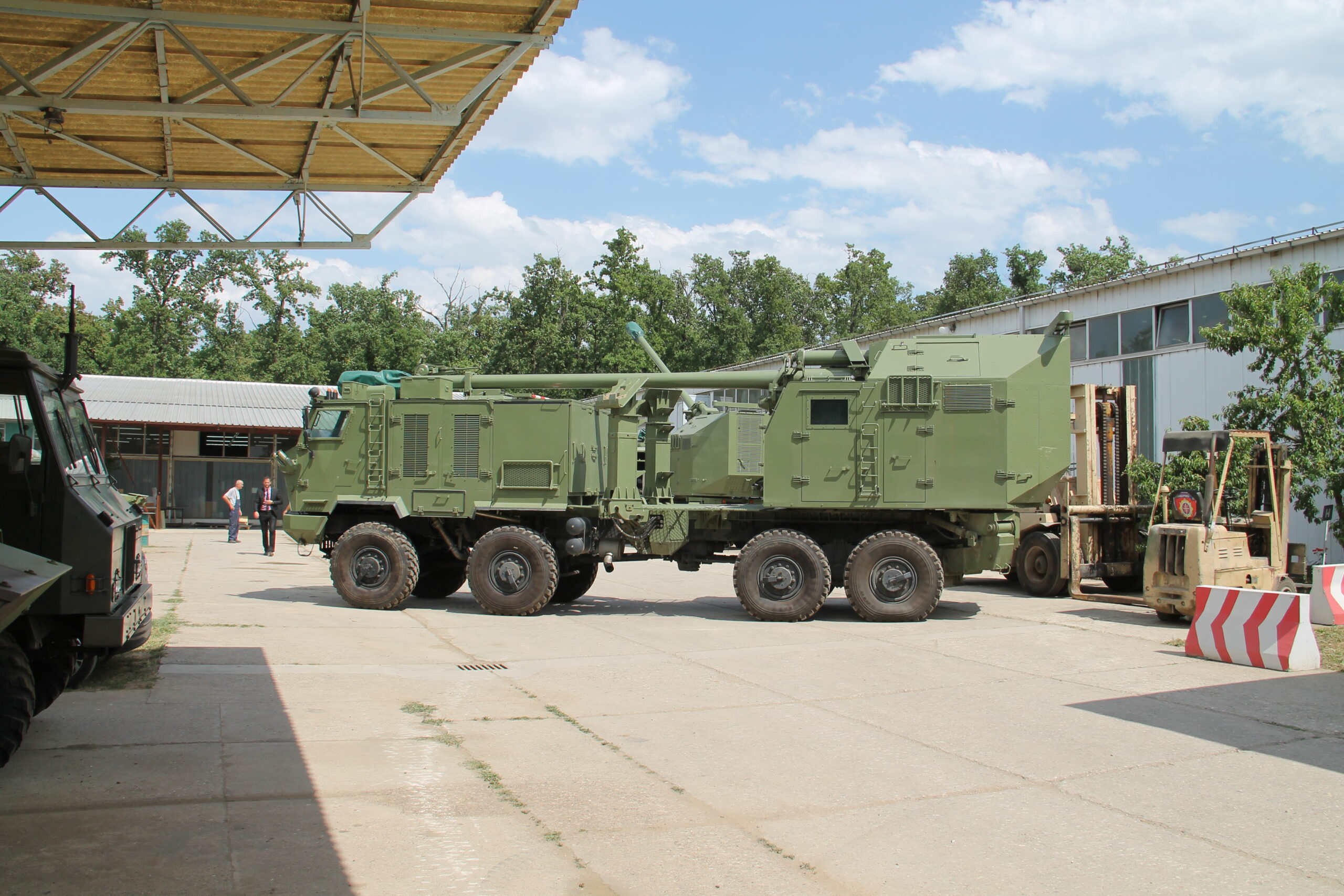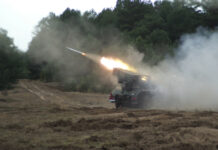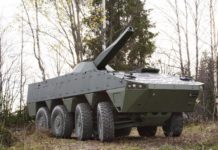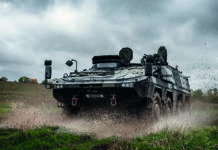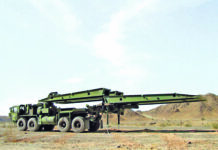The Serbian defence industry has now firmly re-established itself as one of the key players in Europe with the capability to design, develop and manufacture a wide range of weapon systems, especially in the key land sector.
Marketing of these is carried out by Yugoimport SDPR with the backing of the Serbian MoD as well as a number of government agencies and establishments such as the Material Resources Sector and the Defence Technologies Department.
The Military Technical Institute (MIT) is by far the largest scientific research element in Serbia and its main areas are:
- classical armament
- vehicles
- artillery systems and ammunition
- aircraft and electronic systems
- materials
According to the MIT, over the last seven decades, it has developed over 1,300 key items of equipment and today has supplied about 75 per cent of the weapons and equipment used by the Serbian Armed Forces. In addition it has won major export contracts in recent years, especially for artillery systems.
The NORA B-52
One of the best-selling pieces of equipment is their NORA B-52 (8×8) 155 mm/52 CAL Self-Propelled (SP) artillery system which was one of the four systems recently tested in the US to meet a US Army requirement for a 155 mm Wheeled Gun System (WGS). This has been constantly enhanced with the latest version having a protected cab with the 155 mm/52 calibre ordnance with a 23 litre chamber that meets the NATO Joint Ballistic Memorandum of Understanding (JBMoU) in a protected turret at the rear.
Maximum range depends on the projectile and charge combination but firing a locally produced 155 mm high-explosive extended-range full-bore base bleed (HE ER FB BB) projectile a maximum range of up to 44 km is claimed with a total of 36 projectiles and associated charges carried. In addition to being deployed by Serbia, export sales have been made to Bangladesh, Kenya, Myanmar and most recently Cyprus.
The ALEKSANDAR MGS-25
Serbia has also developed a new version on an 8×8 chassis called the ALEKSANDAR MGS-25 155 mm/52 cal SP artillery system which is being marketed with a 23 or 25 litre chamber. This has a remote controlled turret at the rear which is provided with 12 rounds of ready use ammunition (projectile, charges and fuses) with additional 12 x 155 mm rounds of ammunition in a pod to the immediate rear of the protected cab.
This 8×8 chassis is used for a number of other more recent applications including a modular rocket launcher. Mounted at the very rear of one version of the chassis are two pods each of 24 x 122 mm unguided rockets with an additional two pods to the immediate rear of the cab for rapid reloading. An alternative is two pods each of six 267 mm unguided rockets. This chassis is also used to transport and launch the longer-range SHUMADIJA
rocket.
New Ammunition
As well as developing 155 mm tube artillery and a range of Artillery Rocket Systems (ARS), Serbia has made major investments in developing new ammunition for their systems with increased range and more target effect. A good example are their 122 mm rockets which as well as being fired from Serbian ARS can also be fired from foreign rocket launchers such as the widely deployed Russian 122 mm BM-21 ARS. Baseline 122 mm rocket only has a range of 20.3 km but new 122 mm rockets with range of 28, 40 and 50 km have been developed.
The LAZAR
In the past, the former Yugoslavia undertook production of their own version of the Russian T-72M1 Main Battle Tank (MBT) under the local designation of the M-84 and this had a host of modifications to meet local requirements. Serbia has developed upgrades to the M-84 MBT to extend its operational life and enhance its capabilities, especially in the areas of fire control and survivability.
Now in production in Serbia for the home and export markets is the LAZAR (8×8) which in addition to being used as an Armoured Personnel Carrier (APC) fitted with a locally developed Remote Weapon Station (RWS) armed with a 12.7mm machine gun (MG), can also be fitted with a two person turret armed with a 30mm dual feed cannon and 7.62mm co-axial MG.
When compared to other 8×8 platforms LAZAR has a high interior volume of 15 m3 with Gross Vehicle Weight (GVW) being up to 28 tonnes which depends on armour package and weapon installation. To meet different user requirements it is being marketing with different layers of protection.
The MILOSH
The latest AFV to enter production in Serbia is the MILOSH (or BOV M16) which is being marketing for a wide range of battlefield missions. When being used as an APC, it would typically have a crew of three consisting of commander, gunner and driver with space for five dismounts. Typical weapon fit would be a locally developed RWS armed with a 12.7mm MG. In addition to being deployed by Serbia, a batch of MILOSH has been exported to Cyprus as command/fire control vehicles deployed by the NORA B-52 155 mm/52 calibre SP artillery system.
For many years, Serbia has manufactured the Russian MALYUTKA (or SAGGER as it is usually referred to in the west) anti-tank guided weapon (ATGW). The Serbian MIT has carried out a number of MALYUTKA upgrades including a new guidance system in which all the operator has to do is keep his sight locked into the target until missile impact. The latest versions are the MALYUTKA 2F with a thermobaric warhead and the 2T with a tandem High-Explosive Anti-Tank (HEAT) warhead to neutralise targets fitted with Explosive Reactive Amour. Both of these have a maximum range of 3,000 m but the latest MALYUTKA 2T5 is fitted with not only a new HEAT warhead with increased penetration characteristics but also a longer solid propellant rocket mortar to increase range out to 5,000 m.
In addition to being deployed in the standard infantry version, these upgraded MALYUTKA are also launched by the BOV (4×4) APC which is still used for a wide range of battlefield missions including command and control and artillery observation.
UAVs and UGVs
Unmanned aerial vehicles (UAV) and unmanned ground vehicles (UGV) have not been neglected by Serbia as these are becoming increasingly important. The MIT have developed and tested the MILOS UGV and is normally transported to near where it is to be deployed by a trailer towed by a 4×4 vehicle which also hosts the operator’s controls and the mast mounted sensor pack which enables the operator to track the MILOS UGV out to a range of at least 3,000 m.
The sensor pack on the MILIS UGV includes a Charge Coupled Day camera and thermal cameral for observation plus additional cameras for driving. A 7.62 mm MG with 500 rounds of ready use ammunition is fitted plus a six round 40 mm revolver type grenade launcher.
As Serbia is not a member of NATO, and unaligned with any of the major powers it has access to wide markets in Africa, Asia and the Middle East as well as the home market.


